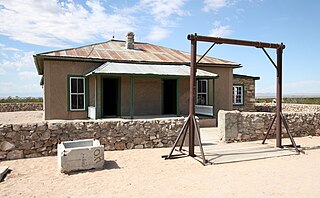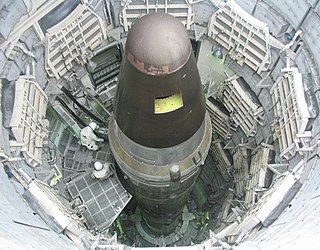 W
WThe American Heritage Museum is a military history museum located on the grounds of the Collings Foundation in the town of Stow, Massachusetts, 21 miles (34 km) west of Boston. The collection consists of over 100 artifacts, most of which were formerly part of the Military Vehicle Technology Foundation collection in Portola Valley, California. Over half of the items on display are from the World War II era, with World War I, the Korean War, Vietnam War, Gulf War, Iraq War, and the War on Terror are also represented. Most of the items on display are American, German, Russian, or British in origin.
 W
WThe B Reactor at the Hanford Site, near Richland, Washington, was the first large-scale nuclear reactor ever built. The project was a key part of the Manhattan Project, the United States nuclear weapons development program during World War II. Its purpose was to convert natural uranium metal into plutonium-239 by neutron activation, as plutonium is simpler to chemically separate from spent fuel assemblies, for use in nuclear weapons, than is to isotopically enrich uranium into weapon-grade material. The B reactor was fueled with metallic natural uranium, graphite moderated, and water-cooled. It has been designated a U.S. National Historic Landmark since August 19, 2008 and in July 2011 the National Park Service recommended that the B Reactor be included in the Manhattan Project National Historical Park commemorating the Manhattan Project. Visitors can take a tour of the reactor by advance reservation.
 W
WThe McDonald Ranch House, also known as Trinity Site, in the Oscura Mountains of Socorro County, New Mexico, was the location of assembly of the world's first nuclear weapon. The active components of the Trinity test "gadget", a plutonium Fat Man-type bomb similar to that later dropped on Nagasaki, Japan, were assembled there on July 13, 1945. The completed bomb was winched up the test tower the following day and detonated on July 16, 1945 as the Trinity nuclear test.
 W
WThe Minuteman Missile National Historic Site is an American national historic site established in 1999 near Wall, South Dakota to illustrate the history and significance of the Cold War, the arms race, and intercontinental ballistic missile (ICBM) development. The site preserves the last intact Minuteman II ICBM system in the United States, in a disarmed and demilitarized status. Guided tours are available of the underground Launch Control Center, and a missile silo can be observed from above. 450 of the newer Minuteman III missiles are still on active duty at Malmstrom AFB, Montana, Minot AFB, North Dakota, and F. E. Warren AFB, Wyoming.
 W
WThe National Atomic Testing Museum in Las Vegas, Nevada, documents the history of nuclear testing at the Nevada Test Site (NTS) in the desert north of Las Vegas. The museum operates as an affiliate of the Smithsonian Institution.
 W
WThe Oscar-Zero Missile Alert Facility near Cooperstown, North Dakota, US was listed on the National Register of Historic Places NRHP) in 2008. Also known as Oscar-Zero MAF and as O-0 MAF, it exemplifies Utilitarian architecture. The NRHP listing included 2 contributing buildings, 9 contributing structures, and one contributing object.
 W
WThe Quebec-One Missile Alert Facility, also known as Quebec-01 or Q-01, located north of Cheyenne, Wyoming, was a United States Air Force Minuteman II ICBM launch control facility operated by the 400th Missile Squadron constructed in 1962. The facility was converted to operate the Peacekeeper ICBM in 1986. The facility was deactivated in 2005 and turned over to Wyoming State Parks in December 2017. The facility was opened to the public in August 2019 as the Quebec 01 Missile Alert Facility State Historic Site after restoration work done by the United States Air Force.
 W
WThe Reach Museum, also known as the Hanford Reach Interpretive Center, is a museum and visitor center for Hanford Reach National Monument located in Richland, Washington. The center tells a story of the cultural, natural, and scientific history of the Hanford Reach and Columbia Basin area, as well as promoting tourism.
 W
WThe Ronald Reagan Minuteman Missile State Historic Site consists of two former missile sites around Cooperstown, North Dakota that were part of North Dakota military activities during the Cold War years: the Oscar-Zero Missile Alert Facility and the November-33 Launch Facility. The site is operated by the State Historical Society of North Dakota.
 W
WSF-88 is a former Nike Missile launch site at Fort Barry, in the Marin Headlands to the north of San Francisco, California, United States. Opened in 1954, the site was intended to protect the population and military installations of the San Francisco Bay Area during the Cold War, specifically from attack by Soviet bomber aircraft.
 W
WThe Titan Missile Museum, also known as Air Force Facility Missile Site 8 or as Titan II ICBM Site 571-7, is a former ICBM missile site located at 1580 West Duval Mine Road, Sahuarita, Arizona in the United States. It is located about 40 km (25 mi) south of Tucson on I-19. It is now a museum run by the nonprofit Arizona Aerospace Foundation and includes an inert Titan II intercontinental ballistic missile in the silo, as well as the original launch facilities.
 W
WThe Wende Museum is an art museum, historical archive of the Cold War, and center for creative community engagement in Culver City, California.